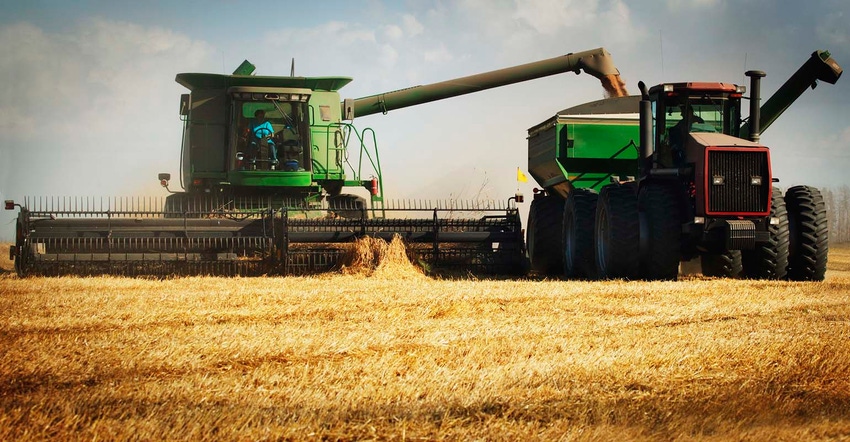
Farmers face different types of soil compaction, but the most worrisome type during harvest is deep compaction, according to DeAnn Presley, soil management specialist with Kansas State University’s Department of Agronomy.
“Deep compaction is very difficult to remove with tillage, as it occurs at a depth that is beyond the depth of most tillage implements,” she notes.
That’s because a 10-ton axle load can compact soil deeper than 18” in moist soil conditions, Presley says. And the prevailing agronomic research indicates that any axle load greater than 10 tons per axle can damage soil structure and lower yield potential the following season.
Presley says a 12-row combine full of corn often exceeds 20 tons per axle. And a two-axle, 1,050-bushel grain cart full of corn can equal 17.6 tons per axle (assuming a 78,500-lb. load, minus about 8,000 lbs. transferred to the tractor through the wagon tongue).
It may feel like a Catch-22.
“Of course, producers must traffic fields at harvest time,” Presley says.
Still, there are two key ways to limit compaction issues from heavy axle loads at harvest.
1. Limit traffic in wet fields.
2. Keep the majority of traffic in end rows when possible.
“Keep in mind that the first wheel pass causes 70% to 90% of the total soil compaction, so preventing random, unnecessary traffic routes on the field is very beneficial,” Presley says.
Another strategy – controlled traffic – can be greatly beneficial, according to Paul Jasa, Extension engineer with the University of Nebraska. That is, grain carts should track the same rows as combines, and farmers should use the same traffic lanes year after year.
“A lot of grain cart drivers think they should move over a few rows and spread out compaction, but this will only compact more of the field,” he says. “Likewise, grain trucks shouldn't be driven in the field as the axle loads and tire pressures are not suitable for soils.”
Establishing traffic lanes that are used year after year can improve traction, soil load bearing and harvest timeliness, and it can minimize the potential total yield reduction from compaction, Jasa says.
“Compaction is managed, not eliminated, and the area subjected to compaction is minimized,” he says.
About the Author(s)
You May Also Like






